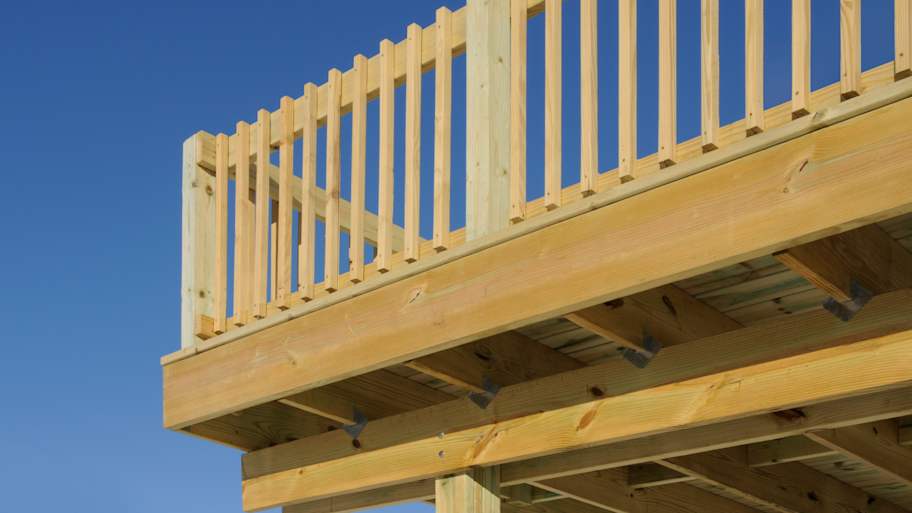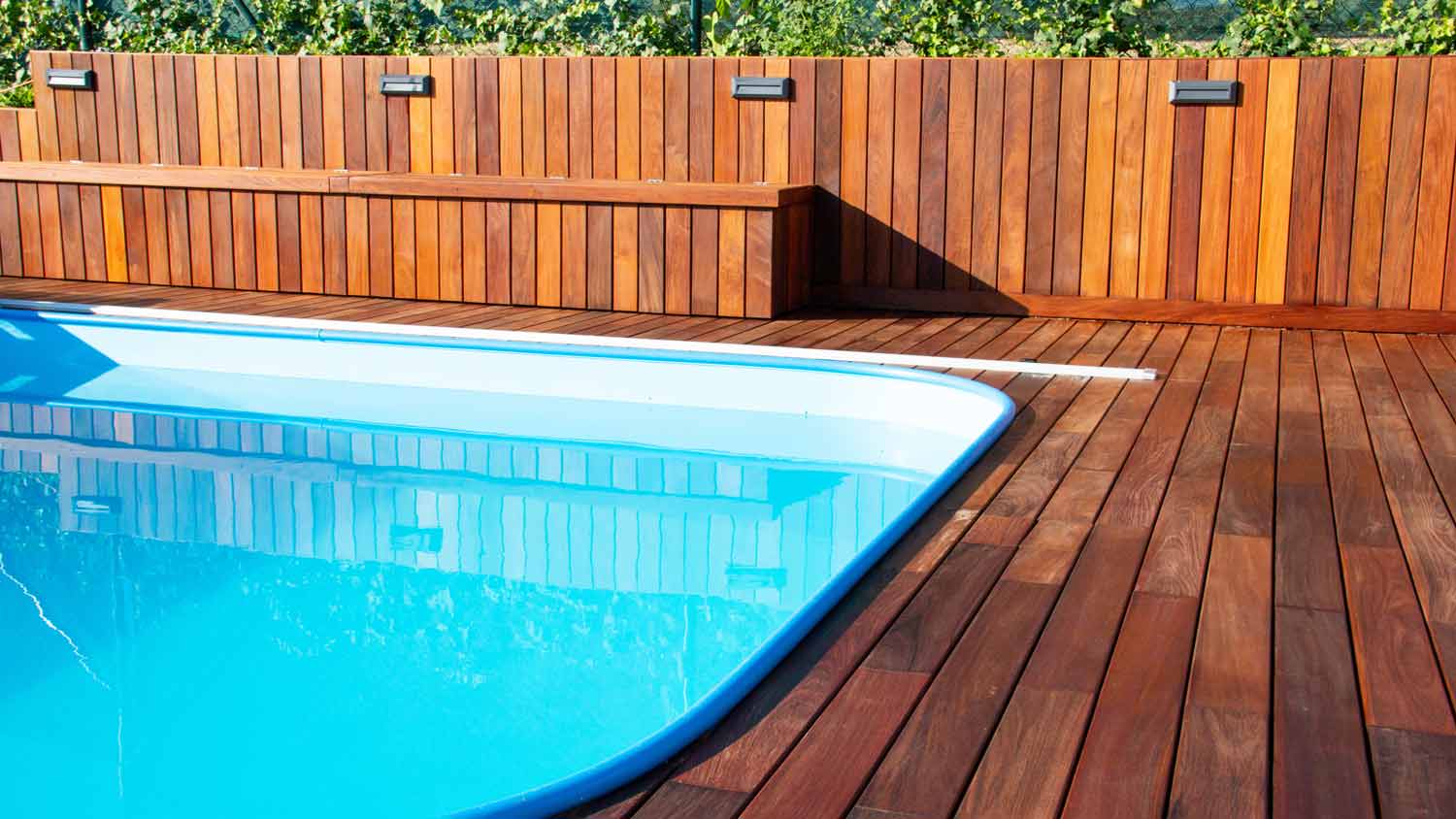
Trying to calculate your pool deck cost? Our guide walks you through both inground and above-ground pool deck cost factors, such as material, location, and labor rates.
Don’t ignore the sinking feeling you have about your deck


Damaged deck posts, inadequate deck footing, and a sagging deck frame are the most likely causes of a sinking deck.
Pest damage and soil erosion are other potential causes.
A sagging deck can be a safety hazard, so it’s best to call a pro before attempting any DIY fixes.
A deck provides extra outdoor space to relax and entertain, but if your deck starts to sink, it can quickly become a nightmare. Sinking is one of the most common deck problems and has several potential causes and solutions. This guide explains the potential reasons your deck is sinking, the solution for each cause, and when to call a pro for deck repair or replacement.
Sinking deck posts are one of the main causes of a sinking deck. Over time, the ground underneath the deck can shift, causing the support posts to sink and the deck to become uneven.
Stabilizing the deck posts will prevent further sinking and help even out the deck. To do this, a pro needs to support the deck with a jack, dig out the footing, and add backfill or concrete to stabilize the post.
Sinking isn’t the only problem that can affect your deck posts and cause your deck to sink or sag. If you live in a region with cold winters, frost can cause the deck posts to heave up as the soil expands.
Check that your deck posts are deep enough. If they aren’t, you may need to have a deck contractor come out and reinstall the deck posts properly to prevent heaving during frigid weather.
Decks need concrete footings to prevent instability. If the concrete footings are unstable (or nonexistent), your deck can sink significantly as the posts settle into the ground.
Unfortunately, the solution to this problem isn’t cheap. You’ll need to replace the footings to help stabilize the deck and prevent further damage. If the sinking is severe, you may need to replace your deck altogether.

Over time, the deck frame and boards can warp and sag—especially if they’re not properly weatherproofed. A sagging deck frame can be dangerous, so stay off the deck until the issue is fixed.
Call a pro to inspect your deck. Depending on the extent of the damage, they may be able to repair your deck. If the damage is severe, replacing the deck is the best option.
When exposed to the elements, deck boards can expand and contract, which can cause sagging. This is especially likely with softer woods like hemlock. Over time, expansion and contraction can cause your deck to sink in places.
Replace sagging or sinking deck boards with new ones. If your deck is made from a soft wood species, consider replacing it with a harder wood like ipe or pressure-treated lumber.

Certain pests, like termites and carpenter bees, can cause serious damage to wooden decks. Pest damage to wood can make it unstable, which can cause your deck to sink in affected areas.
If the pest infestation is relatively new, hire a pest control company to treat the issue and get rid of the pests. Older or more severe pest damage will likely require you to replace the deck entirely.
Erosion happens naturally when the ground is exposed to water. If the soil under your deck erodes, it can cause the deck to sink over time.
Prevent erosion damage by rerouting water away from your deck using downspout extensions or by installing a yard drainage system. If the damage is severe, you may need to remove the deck, reslope the yard, install a drainage solution, and install a new deck.
A sagging deck can be a serious problem. If left untreated, the deck becomes a safety hazard. If you notice sagging and aren’t sure what’s causing it, the best solution is to call a local deck builder to inspect your deck and determine the cause of the sagging.
Depending on the reason for the sagging deck and the extent of the damage, a pro might be able to repair your deck, or they might recommend replacing it. Building a new deck costs $4,400 to $12,600, depending on the deck size and the type of material used.
The best way to deal with a sagging deck is to prevent it from occurring in the first place. Here’s how you can prevent your deck from sagging.
Inspect your deck regularly: Keeping a close eye on your deck’s condition can help you spot potential issues early, before they become more widespread and costly to fix.
Keep up with maintenance: Deck maintenance includes regular painting or staining to help protect the wood from weather damage. It’s also a good idea to clean your deck at least once a year, either using a power washer on a low setting or with a deck cleaning solution and a cleaning brush.
Don’t wait to call a pro: If you notice any issues with your deck, call a pro ASAP to inspect it. Waiting to address the issue can make it worse.
From average costs to expert advice, get all the answers you need to get your job done.

Trying to calculate your pool deck cost? Our guide walks you through both inground and above-ground pool deck cost factors, such as material, location, and labor rates.
Deck repair costs depend on materials, damage you need to fix, and more. See how much it costs to replace or repair a deck in Columbus, OH.

Discover how much it costs to build a balcony, including average prices, cost factors, and tips to budget your project. Learn what impacts balcony construction costs.

Discover the cost of bamboo decking. Learn about installation prices, key cost factors, and ways to save on your bamboo deck project.

Discover redwood deck costs, including average prices, installation factors, labor rates, and tips to save on your new deck project.

A worn-out pool deck is more than just unsightly. Learn the signs your pool deck needs to be resurfaced so you can address the issue ASAP.